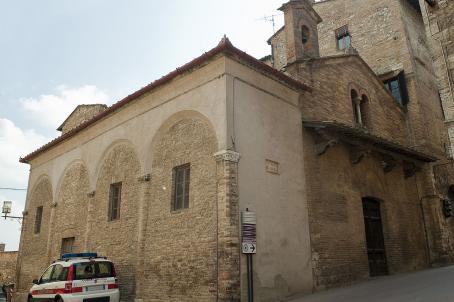Chiesa di San Jacopo al Tempio

The church of San Jacopo al Tempio is a Romanesque church that already existed in the early 13th century. In 1250, the church, which was initially outside the city walls, was included in the second circle of the city walls, at the San Jacopo gate. The church then belonged to the Hospitallers (1311), then was given to the hospital of the Church of the Holy Sepulchre in Pisa (1576), before belonging again to the Hospitallers of San Gimignano (1599). The present church owes much to a renovation begun in 1942.





